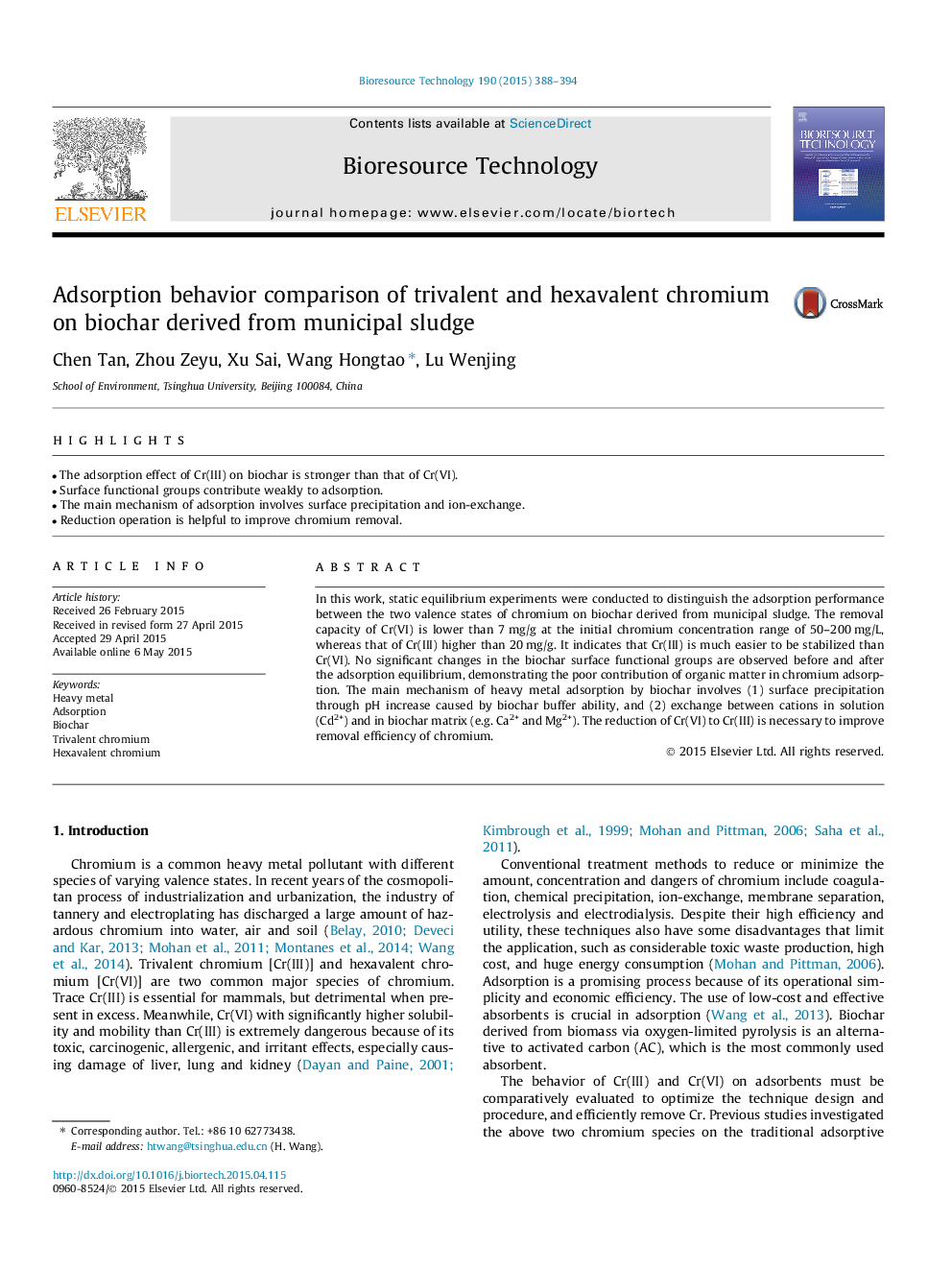| Article ID | Journal | Published Year | Pages | File Type |
|---|---|---|---|---|
| 679652 | Bioresource Technology | 2015 | 7 Pages |
Abstract
In this work, static equilibrium experiments were conducted to distinguish the adsorption performance between the two valence states of chromium on biochar derived from municipal sludge. The removal capacity of Cr(VI) is lower than 7Â mg/g at the initial chromium concentration range of 50-200Â mg/L, whereas that of Cr(III) higher than 20Â mg/g. It indicates that Cr(III) is much easier to be stabilized than Cr(VI). No significant changes in the biochar surface functional groups are observed before and after the adsorption equilibrium, demonstrating the poor contribution of organic matter in chromium adsorption. The main mechanism of heavy metal adsorption by biochar involves (1) surface precipitation through pH increase caused by biochar buffer ability, and (2) exchange between cations in solution (Cd2+) and in biochar matrix (e.g. Ca2+ and Mg2+). The reduction of Cr(VI) to Cr(III) is necessary to improve removal efficiency of chromium.
Related Topics
Physical Sciences and Engineering
Chemical Engineering
Process Chemistry and Technology
Authors
Chen Tan, Zhou Zeyu, Xu Sai, Wang Hongtao, Lu Wenjing,
